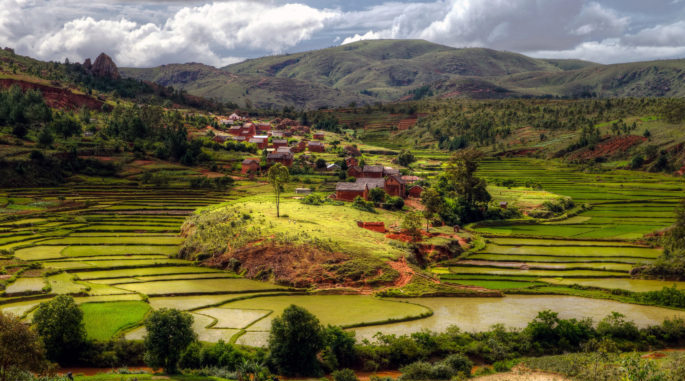Ancient Crops Reveal Asian Colonization of Madagascar
Southeast Asian Route to Madagascar
Rice was common in Southeast Asia during the same period when both rice and mung beans were grown in the Indian subcontinent, but the combination of both rice and mung beans was only found in a couple of locations: at Pacung in Bali, Indonesia, and southern Thailand. These crops are likely to have been introduced to Southeast Asia from the Indian subcontinent because of commercial and cultural exchange across the Bay of Bengal. Moreover, it is probable that both rice and mung beans were then introduced to Madagascar and the Comoros from the site in Bali.
Other evidence also supports this route of crop introduction. The analysis of the size and shape of the rice grains show that rice from Sima in the Comoros consists of both the indica and japonica varieties of rice. Genetic studies of the rice crops found that the two varieties of rice were also present in South Asia suggesting that early cultivation of rice was a mix of two types. Linguistic terms also support the movement of indica rice from South Asia to Borneo, and then to Madagascar.
Unexpectedly, both rice and mung beans were present in the Comoros earlier than in Madagascar. The researchers were surprised because Comorians today speak Bantu languages that come from Africa. It is possible that the first inhabitants of the Islands were from Southeast Asia, which was later subject to an influx of Bantu people.
Although there are lots of things that scientists still do not understand about Madagascar’s past, says Nicole Boivin, senior author of the study from Max Planck Institute for the Science of Human History in Germany, “Southeast Asians clearly brought crops from their homeland and grew them and subsisted on them when they reached Madagascar. This means that archaeologists can use those remains to finally start to provide real, material insights into the colonization process.”
Boivin and Crowther are conducting further research to find out more about the Southeast Asian settlers and the impact they had on Madagascar’s renowned birds, lemur, and tortoises, which are thought to have disappeared around the time when the settlers arrived.
Reference
Crowther, Alison, Leilani Lucas, Richard Helm, Mark Horton, Ceri Shipton, Henry T. Wright, Sarah Walshaw, Matthew Pawlowicz, Chantal Radimilahy, Katerina Douka, Llorenç Picornell-Gelabert, Dorian Q. Fuller, and Nicole L. Boivin. “Ancient crops provide first archaeological signature of the westward Austronesian expansion.” PNAS 113(24) (May 2016): 6635-6640. doi:10.1073/pnas.1522714113
Neha is a freelance science writer based in Hong Kong who has a passion for sharing science with everyone. She writes about biology, conservation, and sustainable living. She has worked in a cancer research lab and facilitated science learning among elementary school children through fun, hands-on experiments. Visit her blog Life Science Exploration to read more of her intriguing posts on unusual creatures and our shared habitat. Follow Neha on Twitter @lifesciexplore.
GotScience.org translates complex research findings into accessible insights on science, nature, and technology. Help keep GotScience free: Donate or visit our gift shop. For more science news subscribe to our weekly digest.




